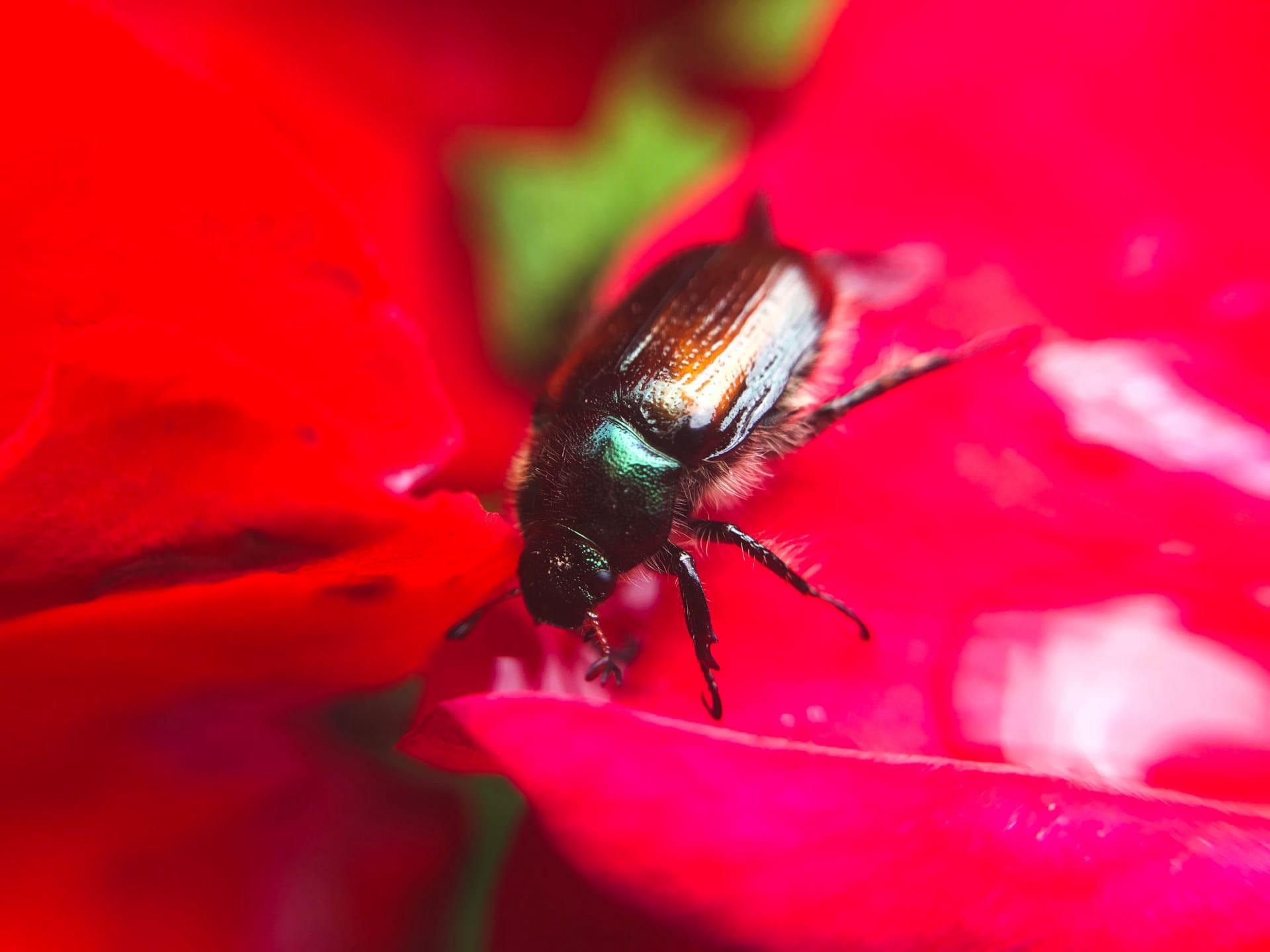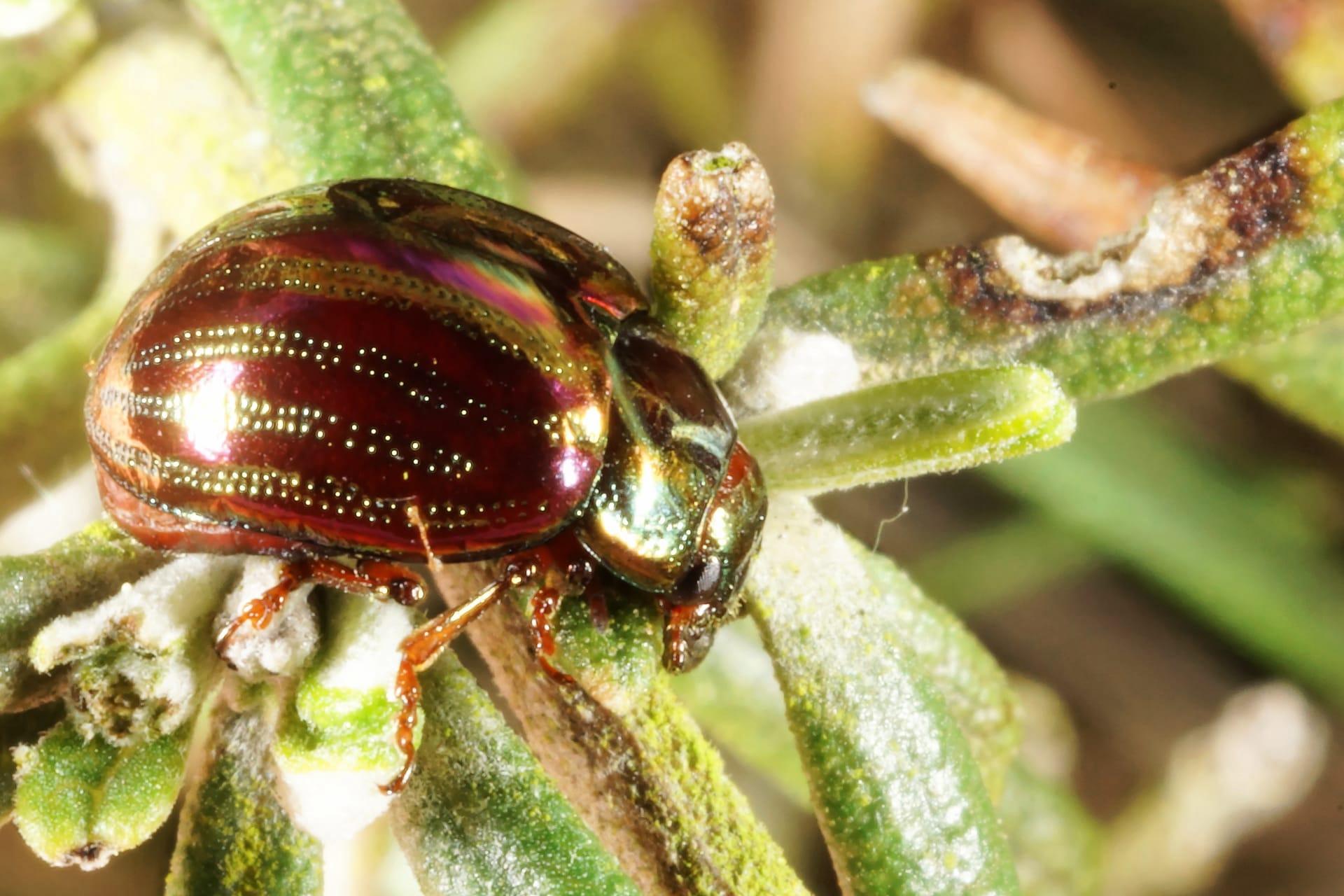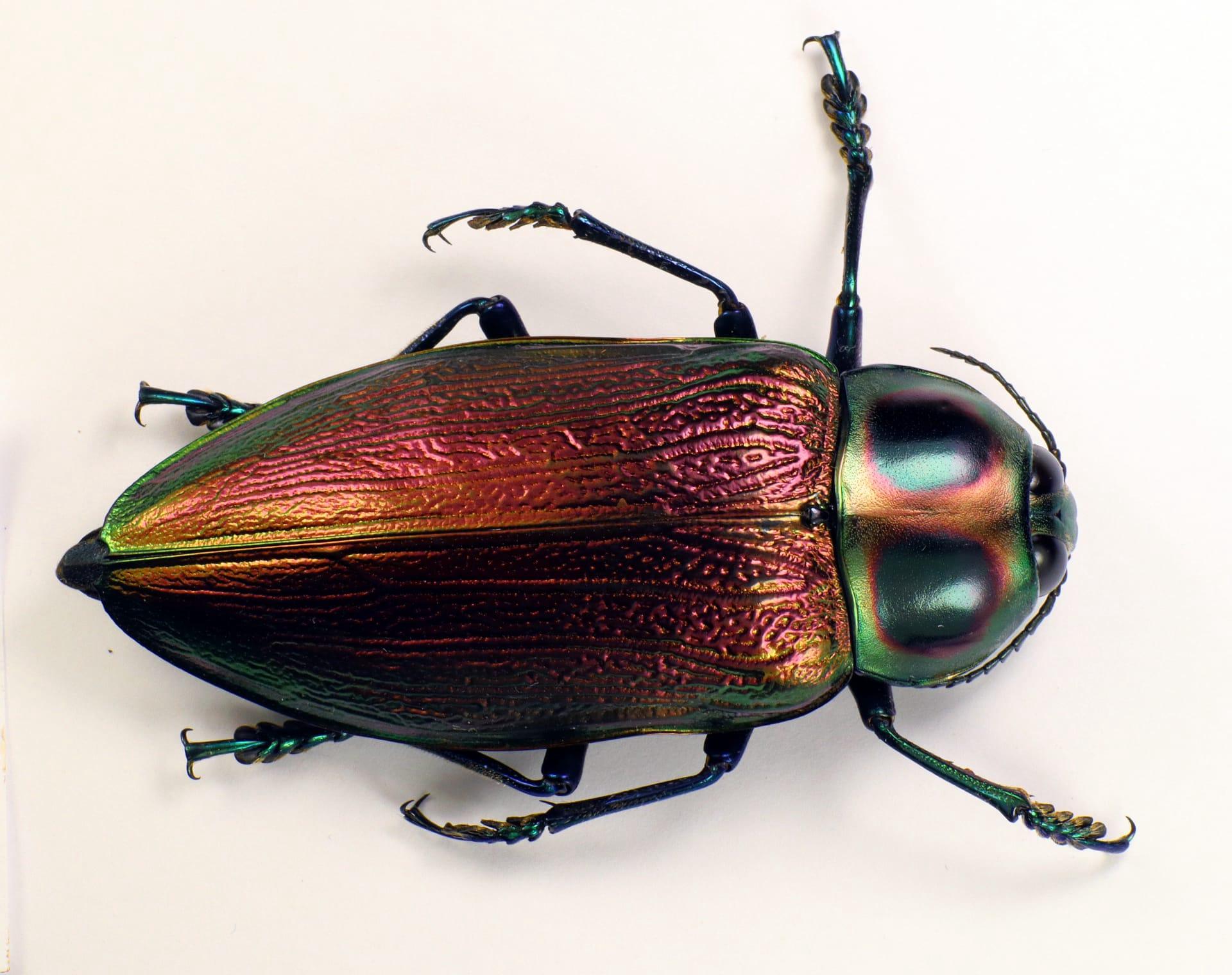1
Christmas beetles, a group of scarab beetles in the genus Anoplognathus, are named for their festive appearance during the Christmas season in Australia. They are particularly notable for their vibrant metallic colors, ranging from shimmering gold to rich green. These colors are not pigments but are caused by the structure of the beetle's exoskeleton, which reflects light in a specific way. Each beetle measures about 20 to 30 millimeters in length and has a robust, rounded body typical of scarabs. Their eye-catching appearance makes them a holiday spectacle, especially in eastern and southern Australia where they are most commonly found.
Another intriguing aspect of Christmas beetles is their life cycle, which is closely linked to the weather and environment. Eggs are laid in the soil during late summer, and the larvae, known as "curl grubs," feed on decomposing plant material and roots. This larval stage can last up to two years, depending on environmental conditions. The larvae then pupate and emerge as adults in late spring or early summer, coinciding with the beginning of the Australian summer. Their emergence en masse creates a striking natural phenomenon, as large swarms of these beetles can be found in certain areas, attracted to light sources and feeding on eucalyptus leaves.

2
One fascinating fact about Christmas beetles is their role in the ecosystem. While in larval form, they help break down organic matter in the soil, contributing to nutrient cycling and soil health. However, in large numbers, they can also become pests, particularly to the agricultural and forestry sectors. Their feeding habits can cause significant damage to crops and young trees, leading to economic losses. Monitoring and managing their population is crucial in maintaining a balance between their ecological benefits and their potential as pests.
Christmas beetles also exhibit a unique behavior known as "ballooning." When seeking new habitats or food sources, they climb to high points and extend their legs and antennae into the air. They then release a silk-like thread from their abdomen, which catches the wind and carries them to new locations. This method of dispersal is not only effective for finding new resources but also plays a role in gene flow and population genetics, as it allows beetles from different areas to mix and breed.

3
The diet of the Christmas beetle is predominantly eucalyptus leaves, which has a direct impact on their habitat preference. Australia's vast eucalypt forests provide an abundant food source for these beetles. However, changes in land use, such as urbanization and agriculture, have led to a decline in suitable habitats and food sources for Christmas beetles, impacting their population in some regions. Conservation efforts focus on preserving these natural habitats to ensure the survival of this iconic beetle species.
Another interesting characteristic of Christmas beetles is their antennae, which are not only used for sensing their environment but also play a critical role in mating. Male beetles have more elaborate and feathered antennae compared to females. During mating season, males use these antennae to detect pheromones released by females, which helps them locate potential mates. This intricate mating ritual highlights the complex sensory world of insects and the importance of specific physical features in their life cycle.

4
Christmas beetles, despite their robust appearance, are quite vulnerable to climate conditions. Their population size can fluctuate significantly from year to year, often influenced by factors like rainfall and temperature. In years with ideal conditions, their numbers can surge, leading to massive swarms that become local spectacles. Conversely, droughts and heatwaves can severely impact their life cycle, reducing their numbers considerably. These fluctuations are vital indicators of environmental health and climate change impacts in Australia.
The shiny exoskeleton of the Christmas beetle isn't just for show; it also serves a practical purpose. The hard, protective shell shields them from predators and environmental hazards. Additionally, the unique structure of the exoskeleton aids in regulating their body temperature, an essential adaptation for surviving in the variable Australian climate. This combination of beauty and functionality is a remarkable example of evolution at work, showcasing how aesthetic traits can also serve practical survival purposes.

5
Communication among Christmas beetles is not just limited to chemical signals; they also use sound. When disturbed, these beetles produce a hissing noise, a form of stridulation, by rubbing parts of their body together. This sound serves as a defense mechanism to deter predators and is a common feature among various beetle species. It adds another layer to their intriguing behavior and highlights the diverse ways insects communicate and interact with their environment.
Finally, the cultural significance of Christmas beetles in Australia cannot be overlooked. They are a beloved part of the Australian Christmas tradition, often appearing in decorations, literature, and art. Their arrival coincides with the festive season, making them a symbol of holiday cheer. This cultural connection emphasizes the importance of biodiversity and the role of even small creatures in cultural heritage and identity. The Christmas beetle, with its unique characteristics and seasonal appearance, has become an integral part of the Australian Christmas experience.